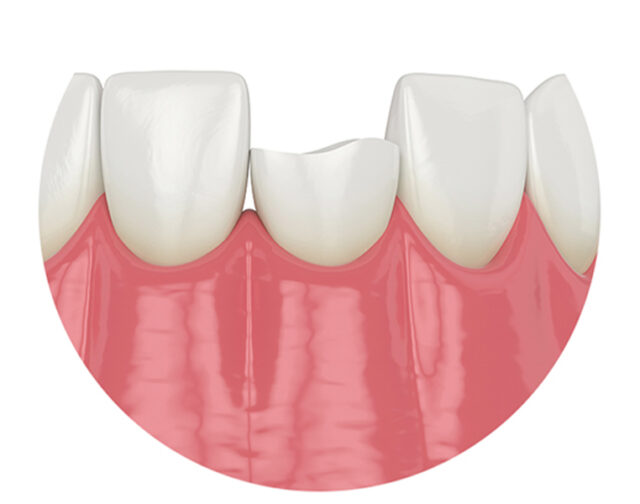 Fractured teeth, also known as cracked tooth syndrome, can occur due to various factors, including:
Fractured teeth, also known as cracked tooth syndrome, can occur due to various factors, including:
- Trauma: Accidents, falls, physical violence, or sudden impacts.
- Biting Hard Substances Abruptly.
- Attrition: Wear and tear of tooth surfaces.
- Teeth Grinding (Bruxism).
- Presence of Large Dental Fillings or Undergoing Root Canal or Scaling Procedures.
- Preventing Fractured Teeth
To prevent fractured teeth, consider the following measures:
- Maintain Regular Dental Checkups.
- Practice Good Oral Hygiene: Brush your teeth twice daily and floss regularly.
- Avoid Chewing Hard Foods.
- Use Mouth Guards During Sports Activities and for Nighttime Teeth Grinding.
- Follow Post-operative Care After Fillings and Root Canal Treatments.
- When to Seek Treatment for Fractured Teeth
It’s essential to seek treatment for fractured teeth when you experience:
- Pain While Chewing.
- Sensitivity to Temperature Changes.
- Swelling Around the Affected Tooth.
- Occasional Mobility of the Fractured Portion.
- Visible Crack Lines on the Tooth.
- Treatment for Fractured Teeth
Treatment options include:
- Bonding: Restoring the fractured or broken tooth surface using composite restorative material.
- Cosmetic Contouring: Polishing and smoothing sharp edges of broken teeth.
- Crown Placement: When a significant portion of the tooth’s surface is fractured, a dental crown may be recommended.
- Root Canal Treatment: For fractures involving the pulp and root, this procedure involves removing the affected pulp, filling it with gutta-percha, and may include post-endodontic restoration or crown placement.
- Veneer: Thin porcelain coverings applied to the front of the tooth when only the edges are damaged.
- Night Guard/Mouth Guard: In cases of teeth grinding, custom-made protective devices are provided for sports or nighttime use.
Post-operative Care
- Avoid Biting Hard Foods.
- Maintain Regular Dental Visits.
- Brush Your Teeth Twice Daily and Floss Daily.
- Use Night Guards or Mouth Guards as Recommended.
Book your appointment Now at Indu’s Dental Clinic with the best dentist in Vizag, providing the Best Dental treatments in Visakhapatnam for all your Dental needs
Visit www.indudental.in (or) call +91- 888 631 4525 for hassle-free dental treatments.
Also Follow us on Instagram and Facebook to access tips, events, and a gallery of our success stories.
